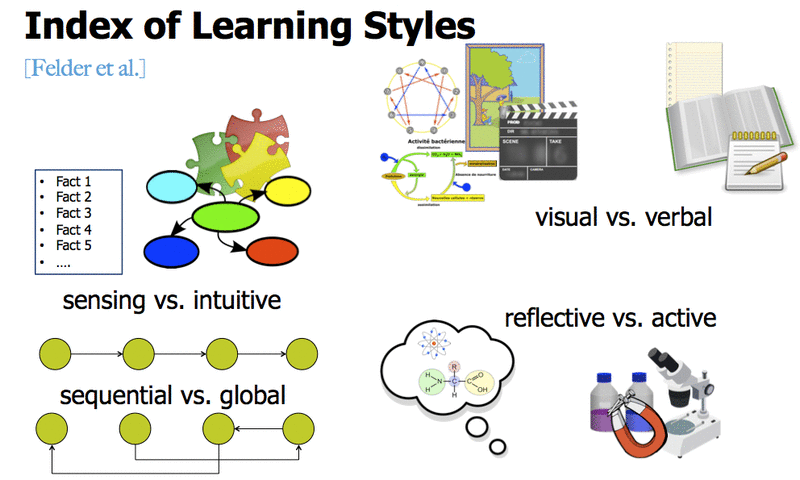About
Adaptation and personalization of E-learning and technology-enhanced learning (TEL) systems in general, have become a key factor for the learning success with such systems. In order to provide adaptation, the system needs to have access to relevant data about the learner. The research outlined here describes a preliminary study with the goal to infer a learner's learning style (e.g. visual vs. verbal) from her Twitter stream.
We note that there is controversy surrounding the learning style hypothesis, which states that enabling a learner to learn with material that is tailored to her own learning style will outperform a learner who learns the material tailored to a learning style that is not her own. As of today no studies have conclusively shown that this hypothesis actually holds for a wide range of people. Although learning styles may not yield improved results with respect to objective measures (such as testing the increase in learner expertise), learning styles are of importance for E-learning systems to improve the learners' satisfaction in the material and to keep them engaged by offering them learning that is appropriate for their self-perceived learning style.
We consider the following question: are we able to infer a user's preferred learning style based on indicators we can observe from the user's Twitter stream? To provide a first answers to this question we conducted the following experiment: we asked a number of Twitter users to fill in a standardized learning styles questionnaire, namely the Index of Learning Styles (ILS) and based on their answers determined the users' learning styles. Then, we extracted a number of features from each user's Twitter stream and fed these features into a machine learning algorithm that estimates for each user the learning style dimensions. Ideally, the estimated dimensions correspond to the observed - ground truth - dimensions.
From our results we had to conclude that, while there is some evidence that a Twitter signal contains useful information, such a classification in general is hard and more complex features need to be derived.
Objective
The objectives of this work are clear: to determine a set of features that allow us to estimate a user's learning style dimensions in a highly accurate manner. Current work focused on basic features (such as the number of images contained in viewed web pages), which were found to be unreliable indicators for a user's learning style. In order to gain more accurate classification results, we have to investigate what exactly are features that correlate with a user's preferences and to what extent modern technology may or may not have altered users perceptions of what type of presentation good learning material entails.
Example scenarios
Within the ImREAL project, providing an indicator for a user's preferred learning style is applicable across all use cases. Such an indicator could be used to select the type of training material (created by the simulator developers), the learner is most likely to prefer. In the ILS this can for instance mean to create training material that is abstract and on the other hand training material that is more example-based.
Publication
Claudia Hauff, Marcel Berthold, Geert-Jan Houben, Christina Steiner and Dietrich Albert, Tweets reveal more than you know: A learning style analysis on Twitter, EC-TEL 2012, pp. 140-152, 2012

